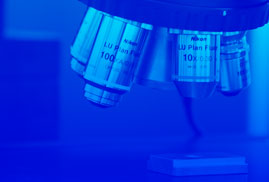In recent years, advances in crystal growth techniques have made it possible to fabricate semiconductor microstructures, which are so small that their electronic and optical properties deviate substantially from those of bulk materials. In these microstructures the electrons and holes energies are confined in one or more directions to a region, which is still considerably larger than the lattice constant but so small that the electron envelope wavefunctions become quantised.
Quantum dots (QD's) are nanometer-scale structures that provide carrier confinement in all three spatial dimensions. In these structures the carrier momentum is also quantised in all three directions and hence a carrier confined within a QD can only occup certain discrete energy levels, which depend on various factors like the potential barrier depth or the shape of the structure. It is the discrete nature of these energy states that make quantum dots highly attractive for quantum computation and optoelectronic devices.
In this thesis the quantum energy levels of single and coupled quantum dots of different shapes are investigated. Coupled QD systems, which may be considered as 'artificial molecules' have been investigated for their possible application in quantum computing. An understanding of how dots couple in quantum dot molecules is needed. We use the linear combination of quantum dot states approximation in order to obtain the two lowest energy levels of the system and then been able to study the coupling between dots when the potential and the separation between dots are varied.
This coupling can be used as a quantum gate, which is a key to building a quantum processor. This gate is achieve using the coupling between QD's and a mechanism which make it possible to switch this coupling on and off. The time required for the 'switching' needs to be long enough for the operation to be performed coherently
In the last chapter we study a possible source of decoherence due to the LO-phonon interaction in self-assembled quantum dots (SAD's). We calculate single electron capture-escape rates due to LO-phonon interaction for single SAD and coupled SAD's systems.


